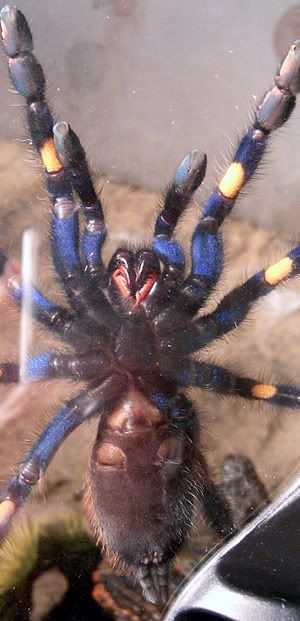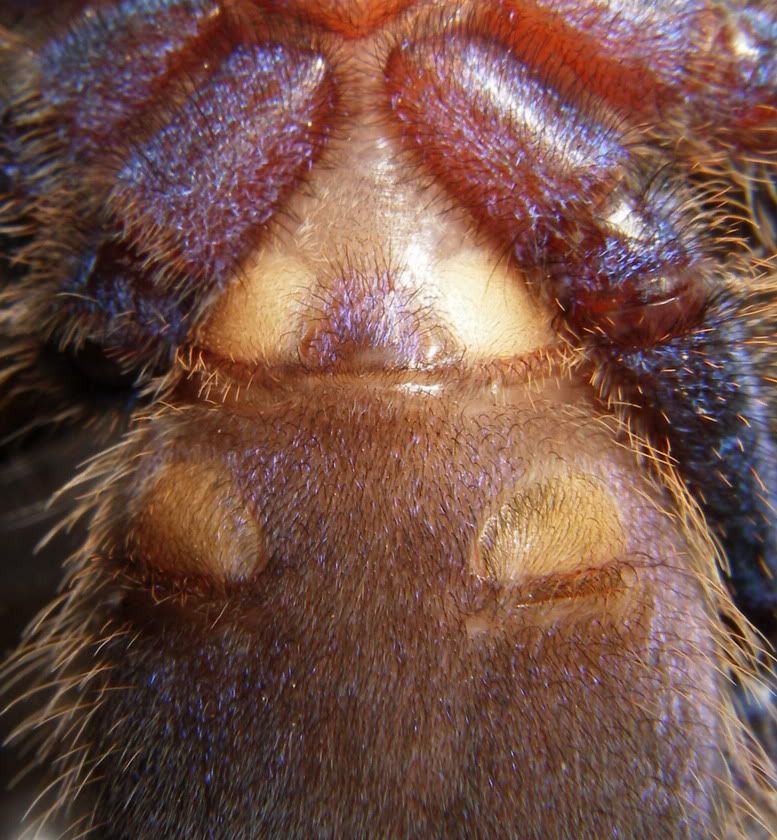I wanted to know about sexing of the p. metallica. I understand that the Pokies in general are difficult to sex ventrally... but I was wondering about this...
My metallica has been sexed a female...
I noticed this little patch of 'blue' on her abdomen:

http://i98.photobucket.com/albums/l246/morgan0731/Kimber010close.jpg
I do not know what that particular area is called :? ... what I was wanting to know is this: Does this little blue patch have anything to do with determining sex? Do both the male and the female have this 'mark'?
My metallica has been sexed a female...
I noticed this little patch of 'blue' on her abdomen:

http://i98.photobucket.com/albums/l246/morgan0731/Kimber010close.jpg
I do not know what that particular area is called :? ... what I was wanting to know is this: Does this little blue patch have anything to do with determining sex? Do both the male and the female have this 'mark'?


